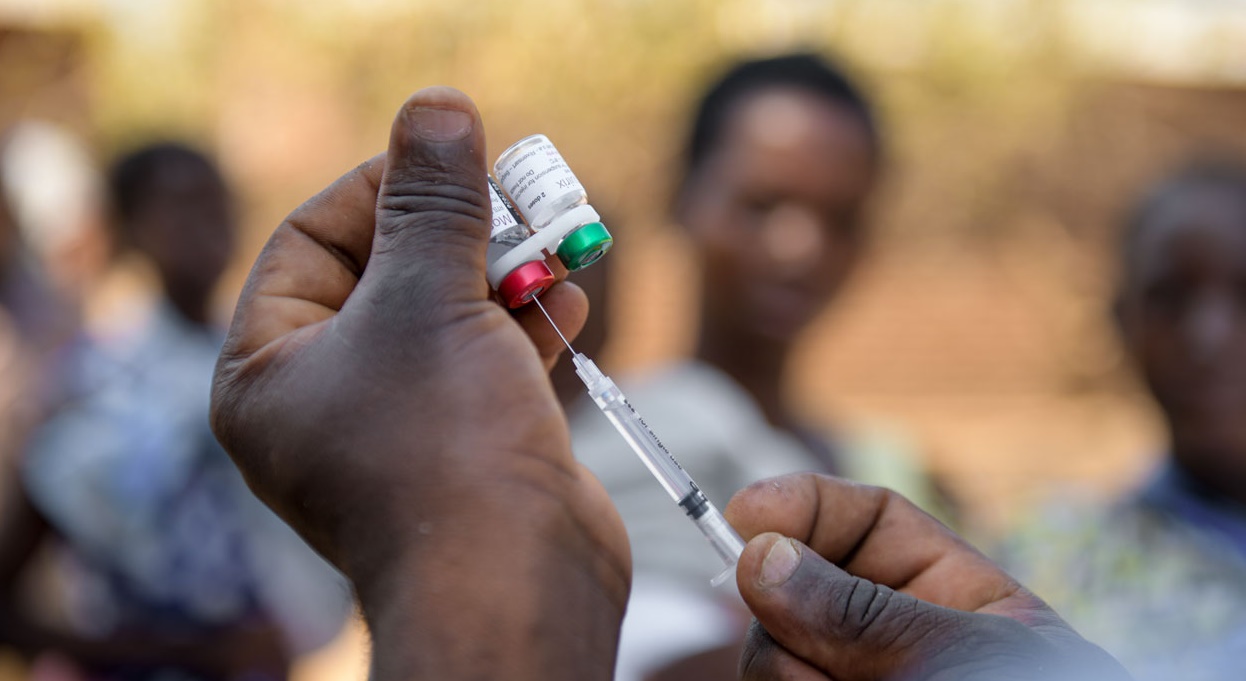Second vaccine against malaria is more effective and cheaper
Malaria is a dangerous infectious disease that is no longer only widespread in Africa. Now another promising vaccine is about to be approved.

It is estimated that over 200 million people contract malaria every year. More than 600,000 people die from it, including around 450,000 children.
This makes malaria one of the world’s deadliest infectious diseases. Africa is most affected by the disease, with around 90 percent of cases. But the infectious disease is also widespread in countries in Asia and South America. In recent years, isolated cases of milder malaria (Malaria tertiana) have also occurred in southern Europe, for example in Spain and Greece.
The need for effective drugs against malaria is therefore great. In order to contain the infectious disease, vaccination is an important approach in addition to so-called chemoprophylaxis, mosquito nets and sprays. In 2021, the WHO recommended the malaria vaccine RTS,S for widespread use and vaccinated many millions of children. A new vaccine is now being tested that is said to be more effective and cheaper.
Info: Malaria
Malaria is a tropical disease caused by single-celled parasites called plasmodia. The pathogens are transmitted to humans through the bite of the Anopheles mosquito. The typical symptom of a malaria infection is fever attacks that occur periodically.
Vaccine tested in five regions of Africa
The new vaccine, called R21/Matrix-M, was developed by scientists at the University of Oxford in cooperation with institutions in Tanzania, Mali, Kenya and Burkina Faso as well as the Serum Institute of India and has already been tested several times for its effectiveness and tolerability.
The current clinical study is a so-called phase 3 study in which the new vaccine was tested on a larger group of patients at several locations. In this way, it should be examined whether the effectiveness and safety can be confirmed in many different patients.
For this purpose, 4,800 children in five selected regions in East and West Africa were vaccinated three times at an interval of one month, the fourth time after 12 months. The study was recently published in the scientific journal “The Lancet”.
R21 vaccine also effective in large group of test subjects
The result: The vaccine has proven effective and prevents around three quarters (between 68 and 75 percent) of symptomatic malaria cases in young children in the first year after vaccination. However, age plays a role: infants and toddlers between five and 17 months of age are best protected, followed by children between one and a half and three years of age. However, the study also shows that booster vaccinations are likely to be necessary.
With the R21 vaccine, a second, more effective vaccination against malaria is now available. The World Health Organization (WHO) is also convinced of its effectiveness and therefore recommended the vaccine in October of the previous year. The research has thus taken a further step towards international approval. Some African countries such as Ghana, Nigeria and Burkina Faso have already approved the vaccine nationally.
What’s new about the R21 vaccine?
Like its predecessor vaccine RTS,S (Mosquirix), R21/Matrix-M is a so-called inactivated vaccine. Both vaccines consist of the same proteins, a protein from the hepatitis B virus and a surface protein from the malaria pathogen. However, R21/Matrix-M is minimally modified and contains a higher proportion of the malaria pathogen. This feature enables the new vaccine to prevent the pathogens from settling in the liver and multiplying.
Info: inactivated vaccine
A vaccine that contains inactivated pathogens, pathogen components or detoxified toxins. Inactivated vaccines produce a weaker immune response than live vaccines, meaning more doses are needed and more frequent booster vaccinations are necessary. However, inactivated vaccines cannot cause a vaccination disease because the pathogens administered are no longer able to reproduce.
This means that the vaccines differ slightly in their effectiveness. The previous vaccine achieved a protective effect of 56 percent in the age group of five to 17 months, in contrast to 75 percent of the R21 vaccine. However, the WHO points out that a direct comparison is difficult.
Another advantage: The new vaccine R21 is said to be easier to produce and, according to the manufacturer Serum Institute of India, could be produced in larger quantities within a shorter period of time. The cost per dose is said to be less than five US dollars, compared to around US$9.50 for its predecessor RTS,S (Mosquirix). This could close supply gaps.
Overall, according to the WHO, both vaccines have proven to be safe and effective in preventing malaria in children and, if widely used, are expected to contribute significantly to improving public health.




